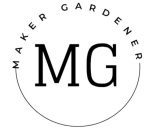Here is a blog post on how to cut bias strip and using it. Bias binding strips are commonly seen in dressmaking or sewing patterns. It simply means that it’s a thin strip of cloth cut in bias. The reason behind is that it allows a good comfortable stretch when it comes to using it. As in this example to make a line a neckline. In this instance, the purpose is to finish off a collarless collar design on a garment. Bias strip has its other uses as well to make sleeve cuffs, belt loops, belt making and many more uses. It’s used in awkward angle places where hemming is not possible.
How to cut a bias strip
Cutting bias strip is fairly easy. However, it does require a bit more fabric than selvedge (edge of the fabric, straight grain) cut binding strip. If there is not enough of fabric around cut either on selvedge or bias and join the strip together.

To cut on bias best way is fold the fabric into a triangle. Check it with a pattern drafting ruler or just fold a square piece of paper into a triangle and that’s your 45-degree bias-cut angle. Once you have done it, give a press with an iron and cut how much you need. One tip is to always cut extra if you can. As you never know if you are going to need more.

I found out from trial and error that sometimes even with best cutting pattern skills one got a bit of distortion just adds up. As a result, you will end up needing more bias strip.

I recently have sewn a dress that is collarless a few adjustments in the pattern ends up with needing extra length in bias strip. It is however not the end of the world if the bias strip is too short all is needed is to join another piece of the strip together.

There are many ways to set the bias strip either by binding or sewing it like the picture above. A seam which means sewing on right then flipping over to the wrong side.



